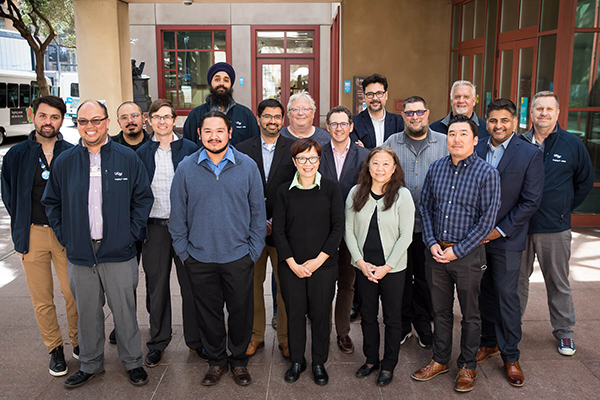Successful Collaboration Between UC Radiology and IT Departments Solves a PACS Challenge
The success of this UCSF IT and Radiology collaboration is an excellent example of how technology enables the UCSF mission: advancing health worldwide.
Most in radiology are familiar with Picture Archiving and Communication System (PACS), how most radiology departments store, distribute, and display imaging studies. Back in August 2019, Marc Kohli, MD and John Mongan, MD, PhD, UCSF Radiology imaging informatics experts, were faced with a challenge – replacing the Department’s ten-year-old PACS which would no longer be supported by the vendor.
A similar challenge faced the other four UC radiology departments – UCLA, UC Irvine, UC San Diego and UC Davis. Based on our history of collaboration, informatics teams at all five campuses created one Request for Proposal (RFP) to find worklist and image display solutions. Nuance workflow orchestrator (WFO) was selected to provide the ability to launch multiple image display solutions supporting cross-UC and strategic growth opportunities. Visage Imaging was the unanimous selection for image display after several rounds of interviews, discussions, and a proof-of-concept pilot using UC data on UC equipment. The Visage viewer provides excellent user experience for radiologists and IT professionals. In addition to the user experience, Visage capabilities enabled UC to consider moving PACS operations to the cloud.

The Team Involved
The typical complexity of a PACS replacement was compounded by cloud capabilities, which required strong multidisciplinary approach. The team consisted of 80 people from numerous disciplines from both the five UC campuses and Visage. At UCSF, collaboration between Information Technology (IT) and Imaging IT was key. “Thanks to Joe Bengfort, UCSF Chief Information Officer and Mo Bagadi, Chief Technology Officer for prioritizing this project,” says Neil Singh, UCSF Radiology Director of Clinical IT Operations. “The support and partnership empowered the UCSF Imaging IT team with a high degree of knowledge and experience, coupled with the advanced Visage tools, to lead and deliver a successful project.”
“I’m incredibly proud of what we produced and of the teams, people and collaboration,” adds Dr. Kohli. “There was a great relationship between central IT and department IT. Making everything work required new skills, and relationships with clear communication about shared responsibilities.” Dr. Mongan agreed, “A key to the success of the project were the efforts of representatives of each clinical section who served on the AIIMS Steering Committee. The ASC made sure that each section’s needs were represented in planning and implementation and kept the department involved and engaged throughout the process.”
Challenges Encountered
With any successful project, some challenges were encountered along the way. “When it comes to protected health information (PHI) and personal identifiable information (PII), encryption is important because we need to transmit images, and new technology presented challenges,” says Singh. “But thanks to the knowledge of network and security teams, we were able to find the right solution that did not impact performance while also finding ways to keep data more protected and safe.”
“One major hurdle for us was using encryption when transferring images such as MRIs and CT scans to the cloud. There are ways of doing this, but they’re not widely used. Coming up with solutions here was definitely a challenge,” says Jeff Block, UCSF Radiology director of infrastructure.
Successful Results
As a result of this project, all five UC campuses will be using Visage as their single vendor for PACS through 2028. Implementation began with UCSF in late fall, early winter 2021 with the rest of the campuses following in 2022.
During the go-live radiologists and our trainees quickly adapted to their daily work using Visage. The system design ensures that the entire image history for a patient is immediately available, and radiologists no longer wait to retrieve prior exams from slow storage. Image display, and time spent switching between patients have dropped dramatically. The ASC champions created hanging protocols that save time for interpretation, allowing radiologists to focus more on images. Breast and ultrasound in particular saw improvements as they now have a single viewer for all their work.
Overall, patients and physicians will receive tests sooner, allowing them to determine the course of treatment in less time.
